Artists
Yvonne Wells Started Quilting at 40. Now, at 85, the Art World Is Finally Taking Notice
"Beyond Patchwork" at New York's Fort Gansevoort brings together 15 abstracted quilts from across Well's four-decade career.
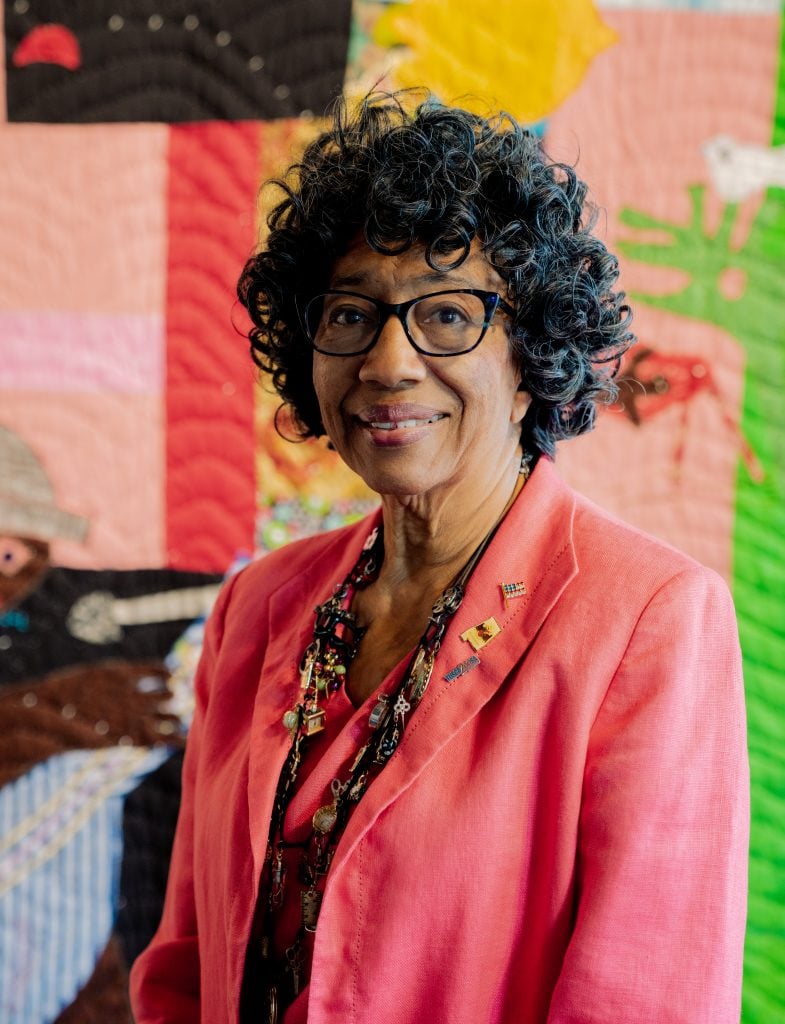
Yvonne Wells does things her own way. The 85-year-old-artist has made over 500 quilts over the past four and a half decades, but she’ll tell you with enthusiasm, she never learned to sew “properly.”
“People would come and tell me I needed to go to sewing school,” said Wells on a video call from her home in Tuscaloosa, Alabama. “But I don’t care if people see the stitches. My stitches are so loose that I can pick ’em up and just walk with them.”
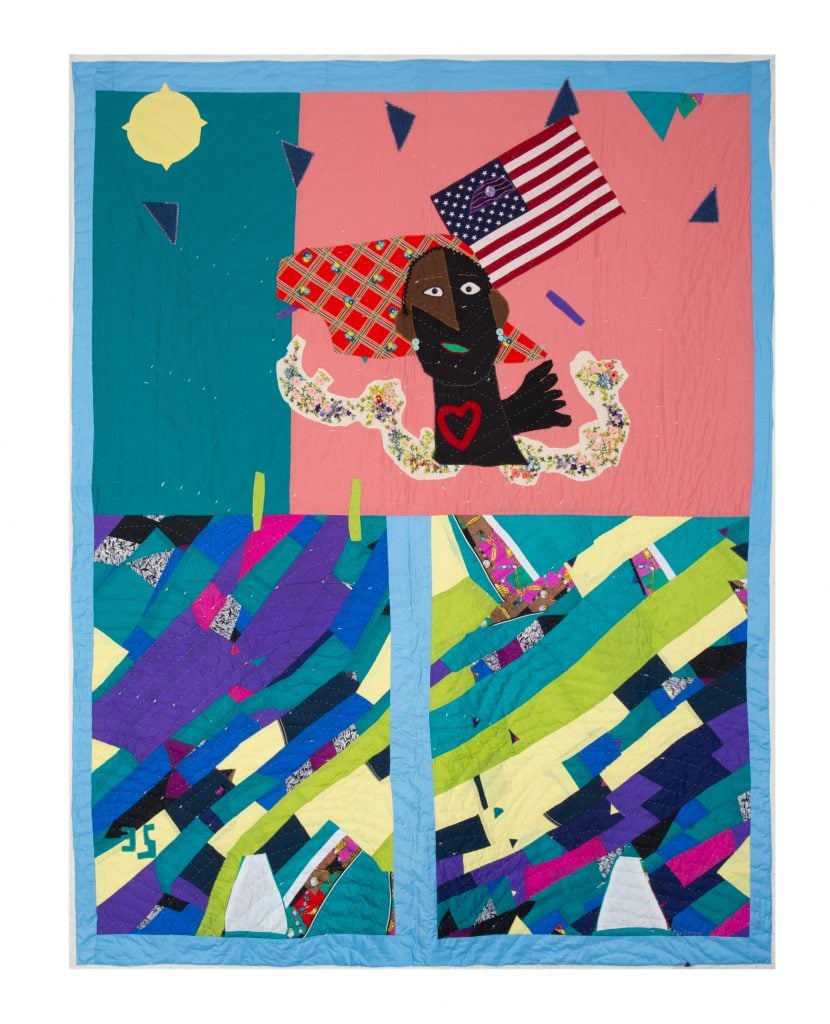
Yvonne Wells, That’s Me (2000). Courtesy of the artist and Fort Gansevoort, New York.
The artist, who was born in Tuscaloosa in 1939, started quilting for the same reason many do: she wanted to keep her family warm. Using old clothing belonging to her children, husband, and herself, she started to cut and stitch to create her quilts. Memories of her own mother inspired her.
“I needed something to do other than mow the yard and clean the house. My mother used to make quilts out of clothes, bedspreads, anything usable,” she recalled, “She’d fix it during the day and put it on us at night to keep us warm.” But Wells’s practical inspirations soon gave way to a tidal wave of creativity. She found herself with an unquenchable thirst for making.
“I use anything I can stick a needle in and that tells my story,” she said with her characteristic quick-witted charm. Working between a large room downstairs in her home and her so-called “quilt cave” where she organized her quilts, Wells became notorious for cutting up anything left lying around in the house. At times, she incorporated unexpected materials like burlap, shoestring, screen wire, and more. Her husband and children soon learned to put their clothes away or risk losing them to a quilt.
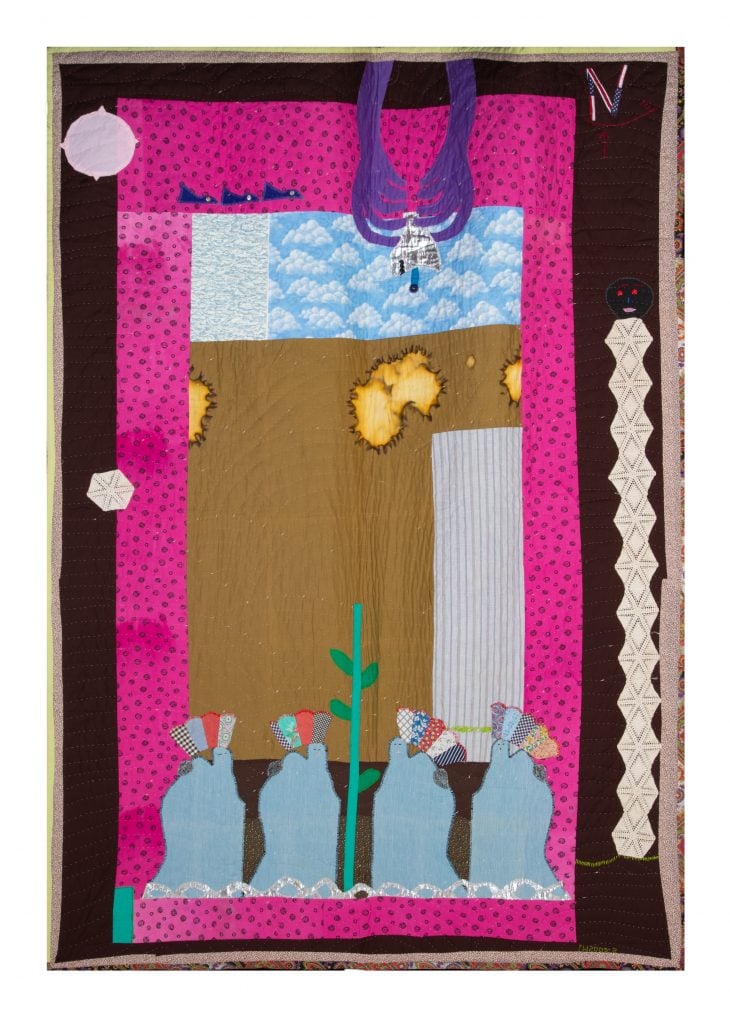
Yvonne Wells, Signs in the Sky (2005). Courtesy of the artist and Fort Gansevoort, New York.
At first, Wells didn’t think of these creations as art. After initial hesitation, in 1985 she was convinced by a local arts agent to show her works at the Kentuck Art Festival in Northport, Alabama. “I never wanted to show my stuff because I was comparing it to the other quilters that are around here and it doesn’t look like everybody else’s,” she explained. In her first year participating, she won “Best in Show.” “I said, ‘What in the world is going on?’” she remembered with incredulous laughter. “Best in Show?” Wells would go on to win that title many times over.
Over the decades that came, the audience for Wells’s quilts would widen. She is best known for her Story Quilts, narrative tableaux that have recounted everything from Bible stories to moments from the Civil Rights Movement. Wells has never aimed for formal perfection as much as energized expression, using curving strips of fabric in unexpected juxtapositions that somehow work together. These quilts can alternately have self-taught insouciance of the paintings of Bill Traylor, or the vibrant knowledge-sharing of the print work of Corita Kent.
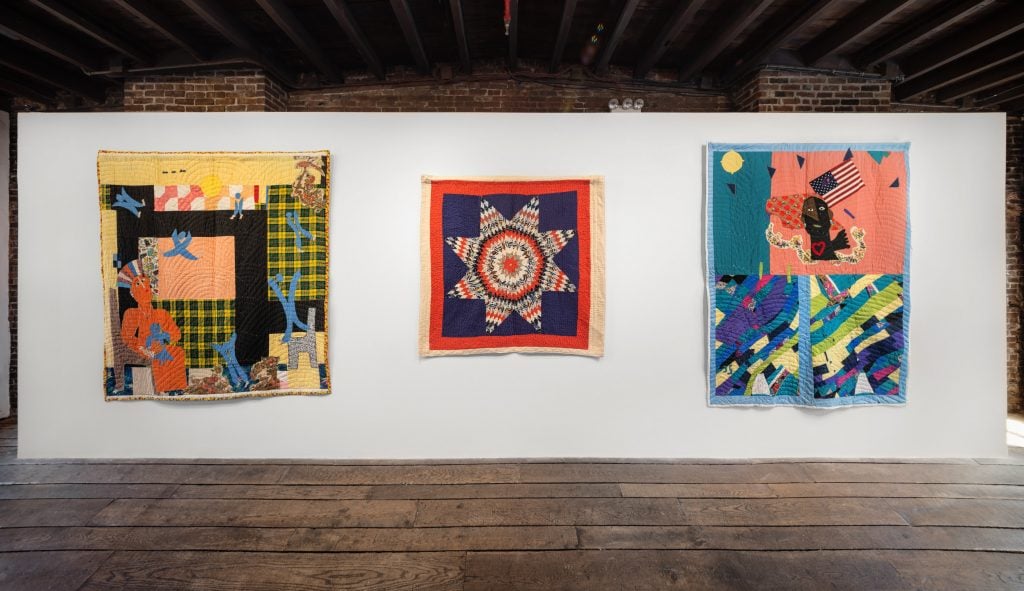
Installation view of “Beyond Patchwork: The Abstractions of Yvonne Wells” at Fort Gansevoort. ©Yvonne Wells. Courtesy of the artist and Fort Gansevoort, New York.
“I do very well being disorganized,” said Wells, of her varied approaches. “The more disorganized I am, the better the quilt comes out. It gives me time to think and see what this piece says to me and see what the shape looks like and it has a conversation with other quilts.”
Now some forty-five years into her practice, Wells is experiencing her first major moment of recognition in the art world. In September, the artist had her first museum exhibition “Picture This: The Story Quilts of Yvonne Wells,” at the Paul R. Jones Museum in Tuscaloosa, which featured works from the beginning of her career to recent never-before-seen creations. The exhibition coincided with the publication of a monograph The Story Quilts of Yvonne Wells by the University of Alabama Press.
Now, in her second solo show with New York’s Fort Gansevoort “Beyond Patchwork,” the gallery is spotlighting Wells’s more abstract quilts through 15 works (through November 2) spanning from 1987 to the present. Unlike the narrative wallop of her Story Quilts, these compositions are elusive hinting at stories that are never articulated but haunt the margins. Wells, for her part, holds them in a similar regard.
“They have the same amount of meaning, the same amount of energy, and the same amount of techniques that I put into the other quilts,” she said.
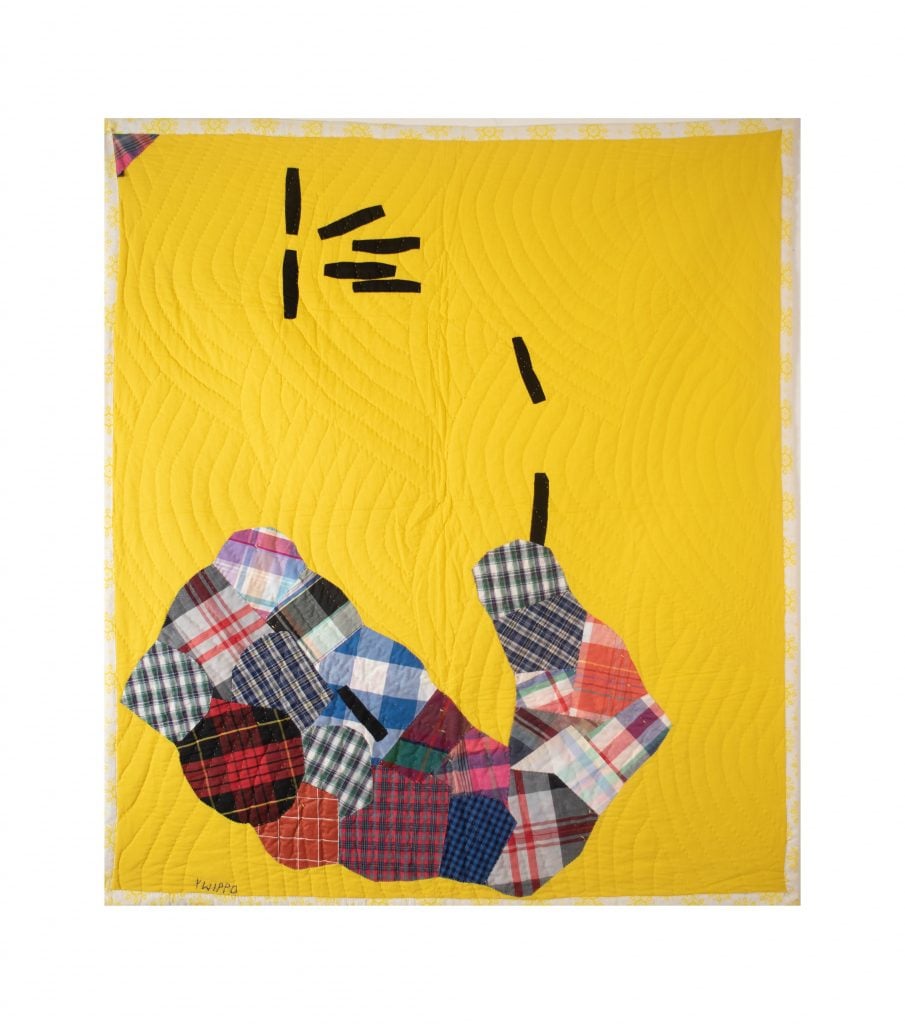
Yvonne Wells, Sea Monster (1990). Courtesy of the artist and Fort Gansevoort, New York.
In one work in the show, her 1990 quilt Sea Monster, a whale-like form is made in circular cuts of various flannels. The being swims through a sea of pastel yellow cloth and seems to spout or flick up black shapes upward. Looking again, one might wonder if the titular ‘sea monster’ shape is meant to be a mermaid.
In some ways, Wells’s abstract quilts more effectively nod to the power of material culture. American flags appear here and there including the works That’s Me (2000) and Crazy Quilt (2017). The flag situates Wells in a pantheon of women makers, dating back to upholsterer Betsy Ross while bringing with it everything the flag—some strips of fabric sewn together in its own abstract form—connotes from freedom to war and a whole lot in between. Such recognizable signifiers are juxtaposed with more cryptic forms: a haunting eye or animal beings.
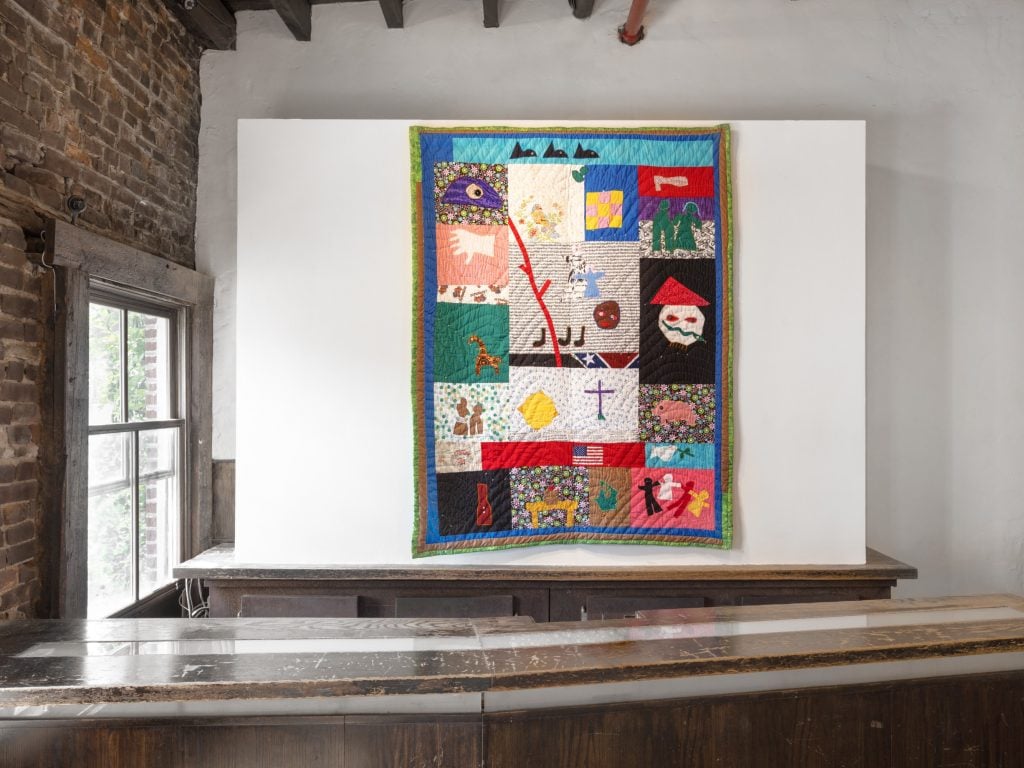
Installation view of Yvonne Wells, Crazy Quilt (2017) at Fort Gansevoort. ©Yvonne Wells. Courtesy of the artist and Fort Gansevoort, New York.
Wells acknowledges that the women quilters of Gee’s Bend, Alabama, have come to inform her works, though she was unaware of them when she began. She references them directly in the quilt The Gees Bend Way, in which kente cloth is juxtaposed with hot pink fabric and another fabric with fruits and leaves, typical of a tablecloth. In such works, Wells builds a kind of time traveling. These fabrics call to mind the different members of a family, the clothing they’ve worn on their bodies, and the homes they lived in as much as the places they have traveled.
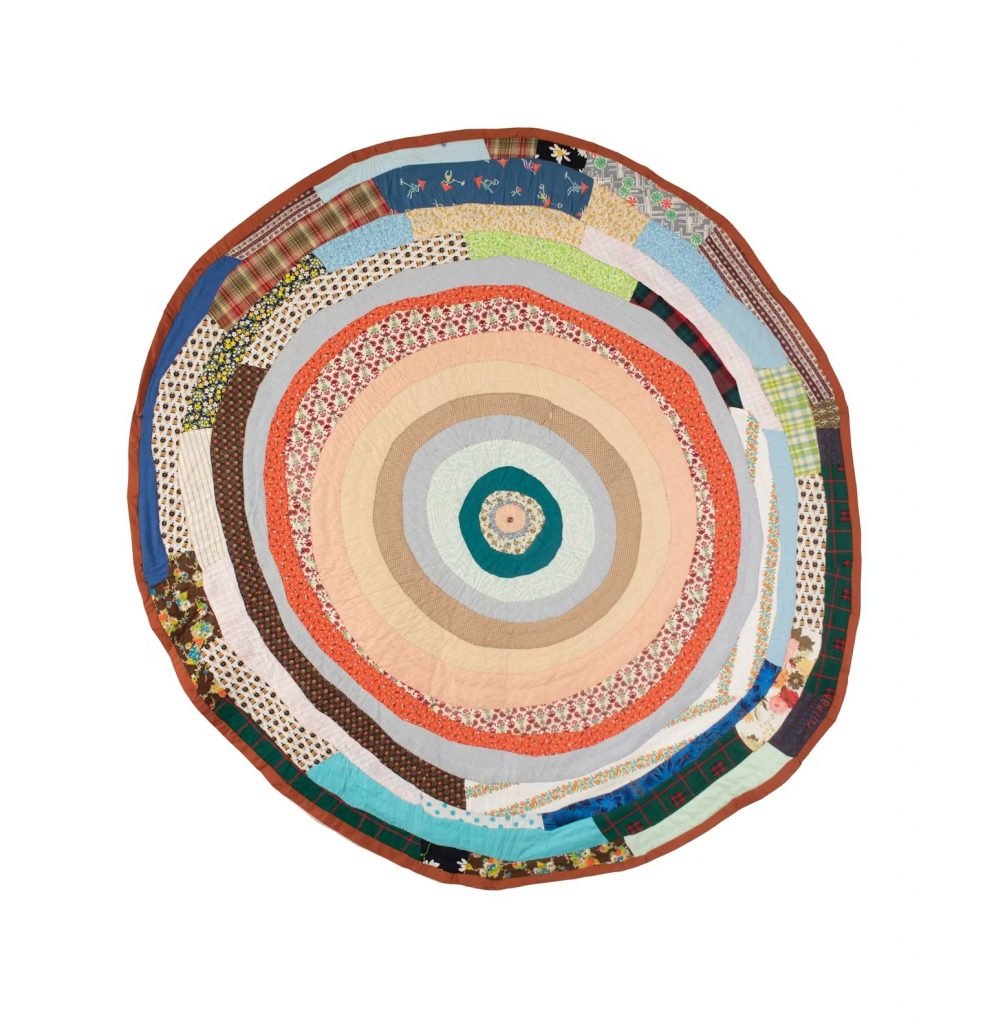
Yvonne Wells, Round Quilt (1987). Courtesy of the artist and Fort Gansevoort, New York.
In the 1987 work Round Quilt, concentric circles of myriad quilted fabrics become a kind of dendrochronology in textiles, holding the passage of time, of expanding family circles in its swirling form. For Wells, a quilt must be made from love. It is in essence, a kind of tenderness.
“A quilt has a utilitarian purpose and a decorative purpose. But a quilt could be a love letter made for somebody that I care very much about,” she said “Quilts feel good and I need to feel good when I make them.”





